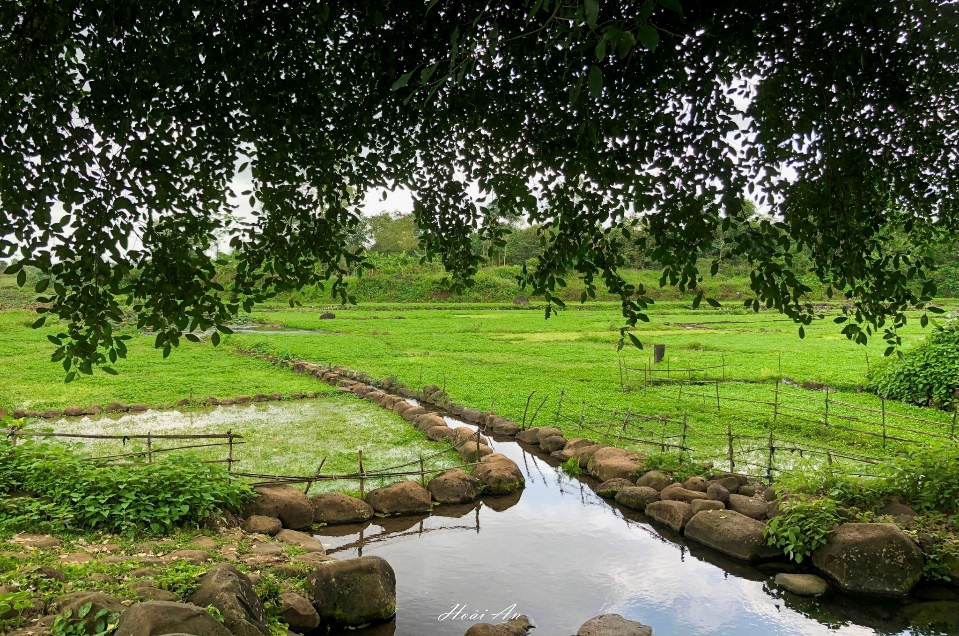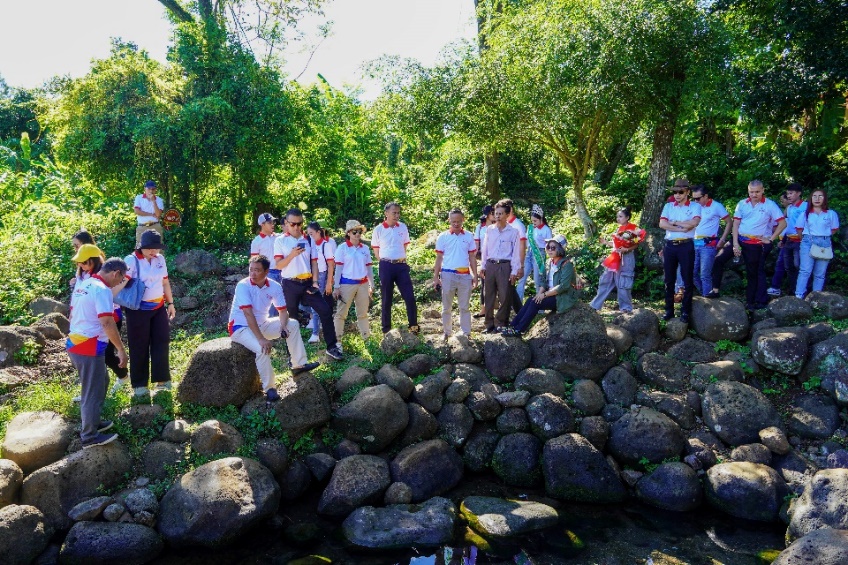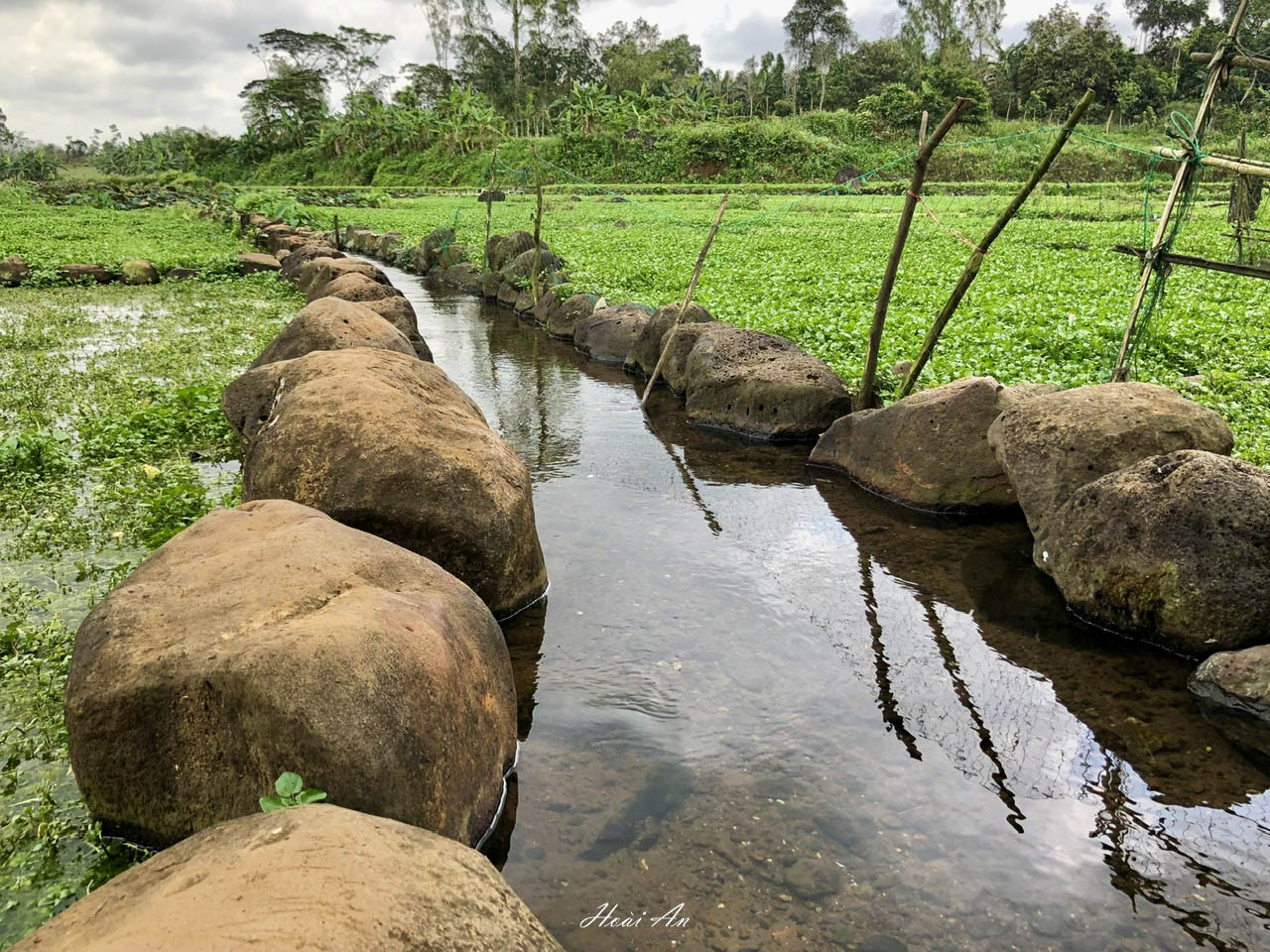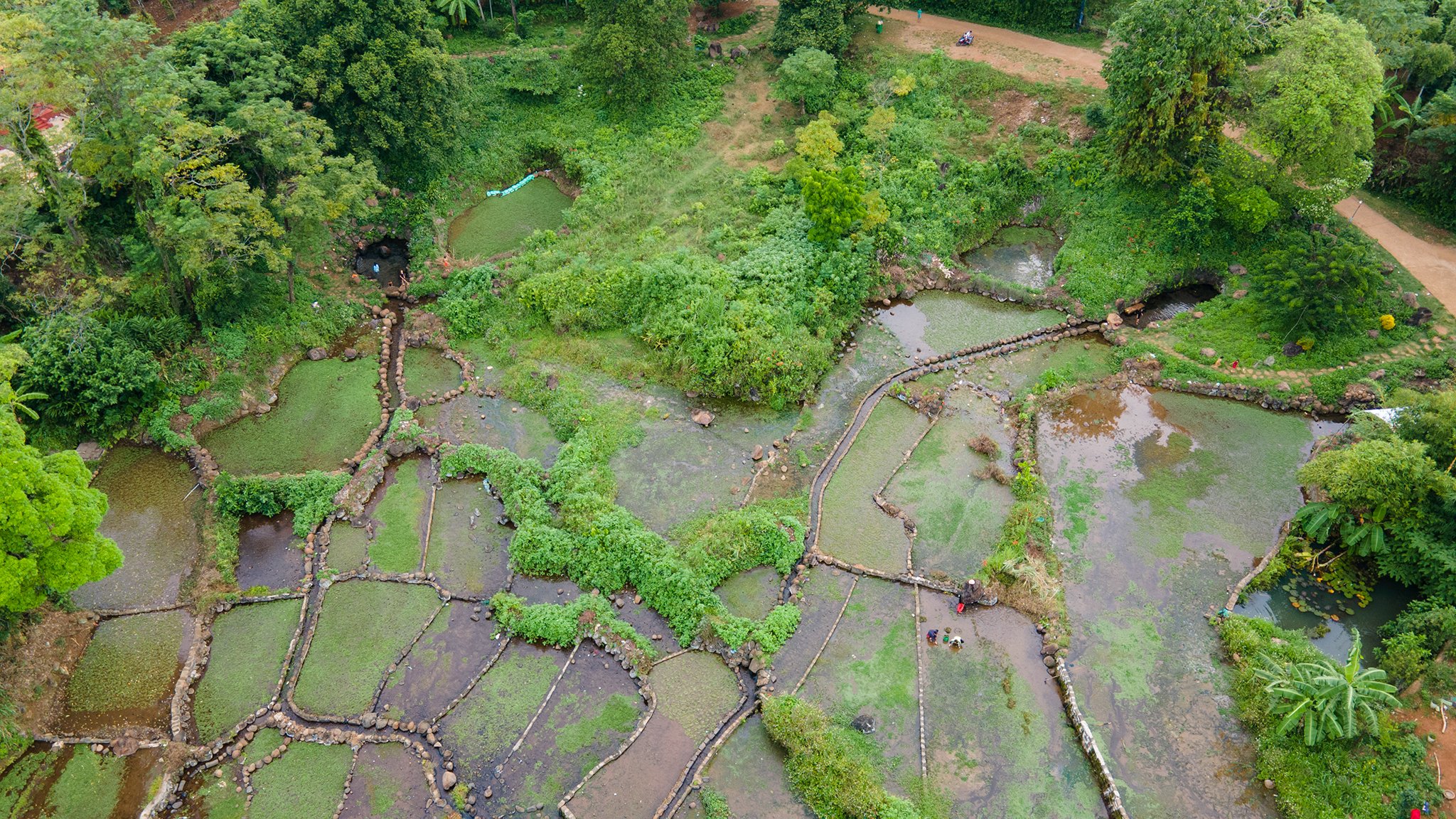The ancient well system in Gio An commune, Gio Linh district (Quang Tri) was built by the ancient Cham people about 1800 years ago and has been preserved by the Vietnamese people to this day. The Gio An ancient well system is a "living heritage", harmoniously combining community benefits and preserving - promoting heritage values.
Gio An ancient well
Running along Highway 75, more than 7 km from Highway 1 to Gio An commune, Gio Linh district, immersing in the fresh air, visitors will get lost in the lush green rubber gardens. Following the asphalt road between prosperous villages for just over 2 km, you will see ancient water systems winding between unique, eye-catching vegetable gardens. That is the architectural work of exploiting underground water sources of the ancients, which people commonly call "Gio An ancient well". This is an ancient water system created by generations of ancient Cham people, then adopted and preserved by the Vietnamese.
The unique feature of Gio An ancient well lies in the structure of three stone circles that are meticulously carved and arranged, and the "eye" of the source is made of stone according to the yin-yang structure from the heart of the mountain, then leading the water out. This is a unique water exploitation technique of ancient people, demonstrating the skillful stone stacking in the process of blocking streams, building tanks, and digging ditches to take advantage of natural underground water sources from hillsides at different heights.

The Ancient Well in An Nha Village
The Gio An ancient well system currently has 14 wells. Most of the ancient wells are located at the foot of red basalt hills, created by the technique of assembling and embanking stones to exploit underground water veins in the hills. From ancient times to the present, no matter how dry the weather is, the water in the ancient well system has never dried up, is still clear and cool. The ancient well system in Gio An is a testament to the intelligent way humans adapt to nature, in order to maximize the potential and advantages of the land. In 2001, the Gio An ancient well system was ranked as a National Historical and Cultural Relic by the Ministry of Culture, Sports and Tourism. In the coming time, the Gio An ancient well system will be included in the Gio Linh district tourism vision: Quang Tri tourism tour visits Truong Son National Martyrs Cemetery - Gio An ancient well - Cua Viet Beach - Doc Mieu Military Monument - Hien Luong and Ben Hai relics. This is a key tourism route and is expected to make Gio An a tourist destination in Quang Tri province, promoting the development of community tourism in Quang Tri in the future.

Tourists visit the Gio An ancient well system
Currently, in addition to investing in renovating the ancient well system, Gio An local authority has also focused on preserving and promoting local architecture. In particular, developing local specialty products, associated with building product labels and brands, promoting trade for local specialty products including: Watercress, taro, purple potato, sweet potato, chicken, turmeric starch, pepper, etc. More and more domestic and foreign tourists have begun to visit the Gio An ancient well system and enjoy local specialties.
In addition, visitors coming here should enjoy one of the products of Gio An, which is watercress. Coming to Gio An, visitors can enjoy delicious dishes made from this type of vegetable that is only familiar with "cleanliness". This type of vegetable is very difficult to grow, it can only grow in clean places, with clean and cool water sources. From watercress, Gio An people have created many special and traditional dishes: stir-fried watercress with beef, watercress mixed with beef, or mixed with chicken eggs, salad, soup cooked with fresh shrimp, etc.

The watercress grown around the well
The ancient well system is a rare and valuable relic, a unique and sophisticated eco-tourism resource created by the Cham people and preserved by the Vietnamese people to this day. Coming to Gio An ancient well, visitors can also immerse themselves in the natural beauty. This is considered a "highlight" for developing community tourism, attracting tourists to Quang Tri province.




